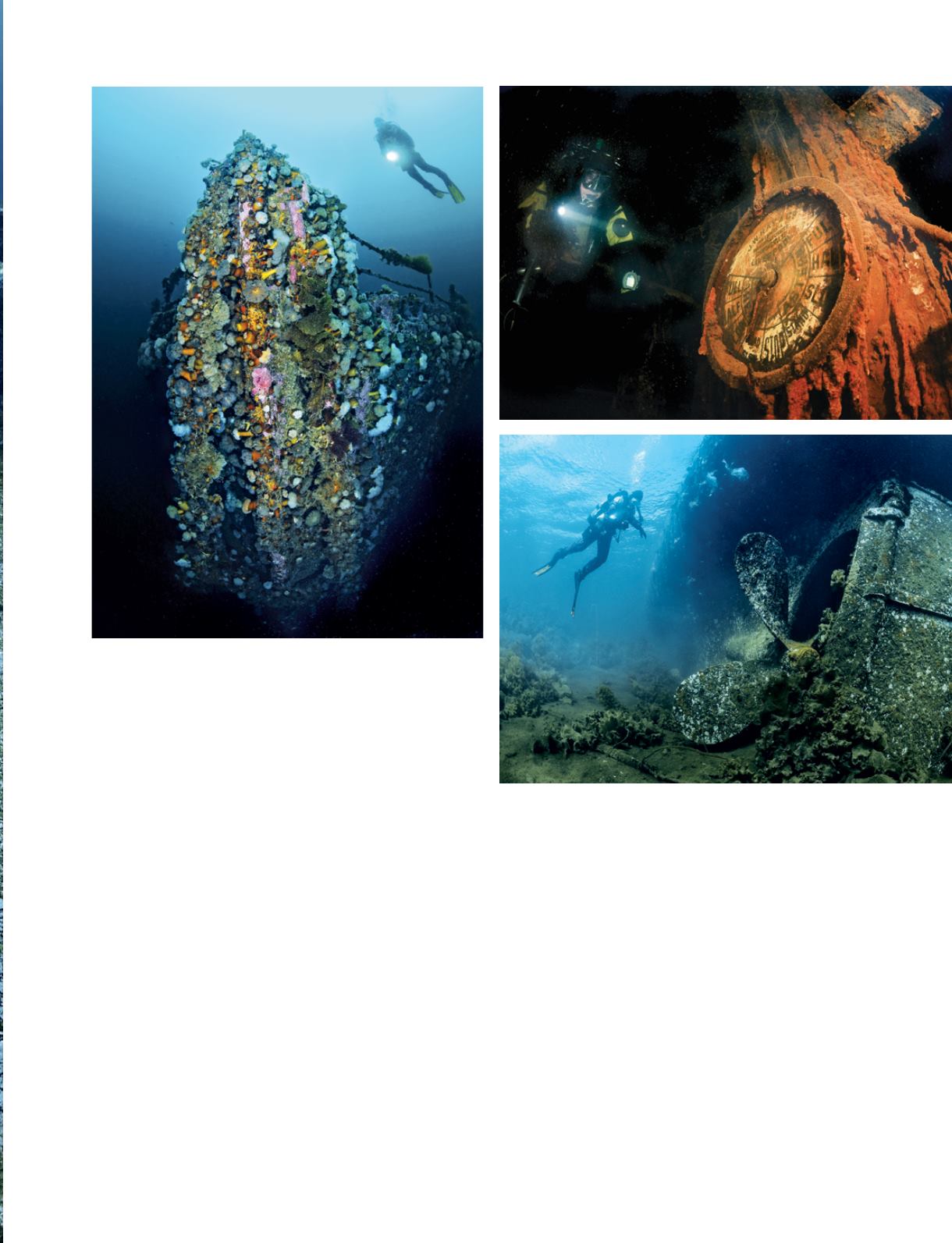
|
35
Twenty-four atmospheres of air pushed the 3,500-pound
torpedoes out of their tubes — and they promptly sank to the
bottom. In all the excitement of his first live combat action,
Grubber forgot to switch the torpedo batteries from “charge” to
“fire.” The green crew of the U-513 recovered quickly, however, and
proceeded to sink the S.S. Saganaga and the S.S. Lord Strathcona
on that day, Sept. 5, 1942. Two months later the U-518 under
Friedrich Wissmann sent the S.S. Rose Castle and the PLM-27 to
join their comrades at the bottom of Conception Bay.
Despite these shipwrecks, Newfoundland doesn’t come to
many divers’ minds when considering dive destinations. In
fact, only a very few have braved the North Atlantic in these
parts. My traveling companions and I really didn’t know what to
expect except mind-numbingly cold water. As it turned out, we
would be as astonished as Grubber with our first visit.
Most of the diving — but certainly not all of it — is done
at the southern part of the island near the city of St. John’s.
Enormous Conception Bay, which contains numerous reefs
and other underwater treasures, lies nearby. Bell Island in
Conception Bay is the home of what was once one of the
largest iron-ore mines in North America. The 5.5-mile-
long by 2-mile-wide chunk of rock drew the attention of
German U-boats during World War II, and it’s the resting
place of the four ships mentioned previously.
Those four shipwrecks are the island’s signature dive
sites, and the remarkable degree of their preservation
should not be missed. Despite some heavy damage that
you’d expect of vessels sunk in war, much of the ships’
equipment and bric-a-brac and even sailors’ personal
effects still exist in place. One reason they’re so well
preserved is the less-than-warm water in which they lie.
Our first dive was on the S.S. Paris-Lyon-Marseilles, or
PLM-27. It’s the shallowest of the four, and it’s smothered
with marine life. Its prop and rudder are intact, as is most
of the stern. There we encountered our first lumpfish,
and we all fell in love with the odd critter. It seems to be
part frogfish and part puffer rolled into one, and there’s
an amazing sucker (adhesive discs) on its belly it uses for
Clockwise from above: Janine McMurdie explores the S.S. Saganaga’s
encrusted bow; Joe Tezak at the engine-room telegraph on the S.S. Rose
Castle; the propeller of scuttled ex-whaler S.S. Southern Foam


